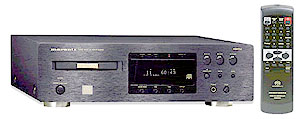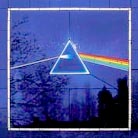 |
||||||||||||||||||||||||||||||||
| A long time ago, in a parallel universe, I studied and eventually taught English. The instructor of the Teaching College English class told us that, sometimes, you could tell how good a paper was by how much it weighed. More paper meant that more thought and effort had gone into creating the document. Of course, this was before the Internet offered "A" papers for download. However, even today, people still equate weight and size with substance. |
||||||||||||||||||||||||||||||||
The first time I picked up the Bel Canto DAC-2, I lifted it and thought, "That feels about right. But, is it an "A" component?" The appearance of the DAC-2 is unassuming - a black box of extruded metal that looks like someone sawed off the main support of a speaker stand. The only visible features are the gold-plated connectors, the red/green LED and the silk-screen nomenclature. Like a term paper bound in a Duo-tang folder, I knew I'd have to read/listen on to determine the merit. |
||||||||||||||||||||||||||||||||
 |
||||||||||||||||||||||||||||||||
| Getting interconnected |
||||||||||||||||||||||||||||||||
 |
||||||||||||||||||||||||||||||||
In the first month of listening, I thought there was a problem with the DAC-2. The music kept cutting out at random. I wondered whether maybe Srajan had shaken something loose when he opened the casing to take the snazzy pictures of the converter's insides. Somehow, the signal wasn't getting to the DAC properly because the green light confirming data lock went red to temporarily interrupt the music. This indicated loss of signal from the transport, a problem upstream from the DAC. I suspected the digital interconnect that a friend had lent me - this reviewer can't afford to keep multiple sets of $200 interconnects on hand. Before mass-hysteria ensued, I e-mailed Mark Markel of Analysis Plus with a request for a digital cable that would be appropriate with the DAC-2. I was promptly shipped the Digital Oval interconnect. |
||||||||||||||||||||||||||||||||
|
Love Reign O'er Me |
||||||||||||||||||||||||||||||||
|
|
||||||||||||||||||||||||||||||||
 |
||||||||||||||||||||||||||||||||
| How so? The DAC-2 revealed the inherent rightness of the recording. It took a good sounding CD and made it sound as good as the LP - sans pops, skips, or infrasonic rumble. Confession time: I have no idea what a master tape sounds like. Still, the Bel Canto box brought out a level of detail that totally clued me in as to how the recording was made. What's more, it rocked, made me want to jump out of my chair and throw plastic lawn furniture into the man-made mud hole that is our neighborhood pond. My wife noticed this heightened intensity as well. She asked how I was going to send the DAC-2 back to the manufacturer. Good question, darling - because without the DAC-2, the whole experience devolved into something I used to call normal but now, by comparison, found hard to swallow. |
||||||||||||||||||||||||||||||||
 |
||||||||||||||||||||||||||||||||
|
|
||||||||||||||||||||||||||||||||
|
|
||||||||||||||||||||||||||||||||
 |
||||||||||||||||||||||||||||||||
|
When I unplugged the DAC-2, I could no longer perceive the exact shapes and sizes of the instruments. The music was still present, naturally, but it wasn't as dimensionally full-bodied. Leading edges became a little overdone, making the strings sounding scratchy. The organ receded farther into the background rather than being an integral part of the music. I also became more aware of the flaws in my CD player - a slightly hashy sound, a less energetic and convincing presentation. If you've ever gone shopping for clay pots to plant flowers, the Bel Canto provided an image so tactile that it was like touching the rough earthen surface of a plain terra-cotta planter. Regular CD had the effect of covering the clay with a clear glaze, preventing me from feeling the clay's surface texture, the details that would have revealed the hands which shaped the pot. |
||||||||||||||||||||||||||||||||
 |
||||||||||||||||||||||||||||||||
|
|
||||||||||||||||||||||||||||||||
|
|
||||||||||||||||||||||||||||||||
 |
||||||||||||||||||||||||||||||||
| With the DAC-2, "Vampire Blues" from Neil Youngs' remastered On the Beach [Reprise 48497, 2003] reminded me of analog at its best, ignoring the pops, clicks, worn scratches and rumble for a minute. The music was compelling, my head bobbing to the rhythm. Neil's reedy voice had presence and weight. Ditto for the weird bass solo at the end of the song. Guitars were stretched across the soundstage. The hair drum sounded like a paper rattle with sand in it - shik-ka-shik! The DAC-2 was so good that I could even distinguish the details of the differently engineered tracks on the album. Without it, the hair drum sounded like an insistent hiss - shh shh. This is the incoherent hashy digital sound I've mentioned earlier, resulting in confused leading edges that also slurred Neil's sibilants. It reminded me of a fuzzy worn record - wasn't digital supposed to be better than this? Without the DAC-2 to keep the fuzz from harassing the hippies, the music didn't sound cool. The weird bass solo became blurred and indistinct, the organ murky. The drums sounded like someone was punching a pillow instead of the steady yet dopey groove I heard with the D/A. I started to get fidgety, impatient for the song to end so I could return to the Bel Canto. |
||||||||||||||||||||||||||||||||
|
I've been collecting CDs since 1986 when I could afford my first player, a Symphonic 3-beam pickup with what I thought of as surprisingly good fidelity at the time. I was one of those idiots who sold off most of his record collection, replacing the best titles with CDs. It wasn't until much later that I realized that CD players do not all sound the same, that some of the LPs I replaced didn't sound as good on CD. What was I hearing? Partly because of the ear-bleeding highs, CDs were fatiguing, like those blasted occasions when you're stuck in line behind a chronic complainer. With my transport, the DAC-2 effectively taped the complainer's lips shut and moved me to the front of the line. I got to hear what I came for without digital distractions. Because my player doesn't decode HDCD, I wasn't able to compare the effects of the DAC-2 with HDCD. How come I own dozens of HDCD-encoded discs and no SACD hybrids? Because these recordings sound good even without the decoder. Do the engineers know something audiophiles don't? |
||||||||||||||||||||||||||||||||
 |
||||||||||||||||||||||||||||||||
|
"She knows what you want, but I know what you need..." [Bob Dylan] |
||||||||||||||||||||||||||||||||
|
|
||||||||||||||||||||||||||||||||
 |
||||||||||||||||||||||||||||||||
 |
 |
 |
||||||||||||||||||||||||||||||
|
Is there a DAC-2 in the house? Not content to offer a "good enough" follow-up, I asked my friend Don if I could try the DAC-2 on his brand-new Marantz SA8260 SACD/CD player. While I have heard SACD in a dealer showroom in a cost-no-object system, I've never had the opportunity to compare SACD with CD in a system where cost is important. How 'bout the fact that the first SACD I ever heard was of a recording made in 1959 - Miles Davis' So What ? Are there any SACDs of recordings made in the 21st Century? |
||||||||||||||||||||||||||||||||
| Don listens mostly to jazz and his system makes that clear. It strikes a fine balance between detail and naturalness, with a beautiful midrange and a reasonable amount of bass. With the Marantz as source, the rest of the system includes: Sonic Frontiers preamp; Bryston 7B ST monoblocks; Vandersteen 3A loudspeakers. Don uses XLO interconnects, AudioQuest speaker cables, TARALabs power cables, and an Audio Power power wedge. Pricey? A little. Exorbitant? No way! Musical? Yes indeed! |
||||||||||||||||||||||||||||||||
 |
||||||||||||||||||||||||||||||||
For this experiment, we put on the 30th-anniversary hybrid SACD of Pink Floyd's famous Dark Side of the Moon [Capitol/EMI Records 82136, 2003] and compared it against my copy of the 20th-anniversary CD [Capitol/EMI Records 81479, 1993]. Don likes "Money" - and who doesn't? We played my CD first, direct and sans external DAC. Luckily, my expectations were pretty low. The sound was nothing to write home about. The shrill guitar lead and sax solos sounded fuzzy and indistinct through this SACD player, too. The sound suffered from all of the usual 16/44 maladies -bright highs, thin bass, narrow soundstage, blurry details. (This is a common assumption but patently untrue - a SOTA DAC like my Zanden Model 5000 MkIII which only decodes 16/44 data streams puts a complete lie to this notion. All CDs are 16/44 and no more, never mind the bits-and-numbers designations. It's intrinsic to the Redbook format - Ed). |
||||||||||||||||||||||||||||||||
 |
||||||||||||||||||||||||||||||||
|
|
||||||||||||||||||||||||||||||||
|
So what difference would the DAC-2 make to the molten CD layer on the hybrid disc? It turned the flaming terror of the CD layer into a Hawaiian island with an extinct volcano. The bright, edgy highs were smoothed out. The lead guitar twang and the screeching saxophones were tamed. Instead of fleeing, I was entranced and wanted to listen. The soundstage was less congested, and I had a more accurate picture of the musicians and their instruments. Compared to the SACD layer, the sound was very different, yet I wasn't left wanting for musical details or ambient cues. The DAC-2 approached the size and scope of SACD, but not in the same way. The Marantz player was dangerously close to the hyper-detail that can drive certain listeners out of a room by offering a more forward, upfront presentation. The DAC-2 offered the same details, but invited this listener back into the music rather than forcing the music on him. For some, the DAC-2 may sound a little too smooth, too refined, too relaxed - like a salesman, certain listeners might not trust it. I suspect that a more forward sound could be achieved by tuning with cables and accessories. The SACD layer sounded excellent. Even though it wasn't as mellifluous as the DAC-2, it was more revealing, probably because of the extra bite it presented in David Gilmour's guitar and bellowing voice. Personally, I would call it a draw. While my experience was not conclusive, SACD did not out-distance the DAC-2 by the significant margin I was expecting. |
||||||||||||||||||||||||||||||||
 |
||||||||||||||||||||||||||||||||
|
|
||||||||||||||||||||||||||||||||
 |
||||||||||||||||||||||||||||||||
| Manufacturer's website | ||||||||||||||||||||||||||||||||
 |
||||||||||||||||||||||||||||||||